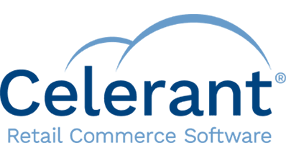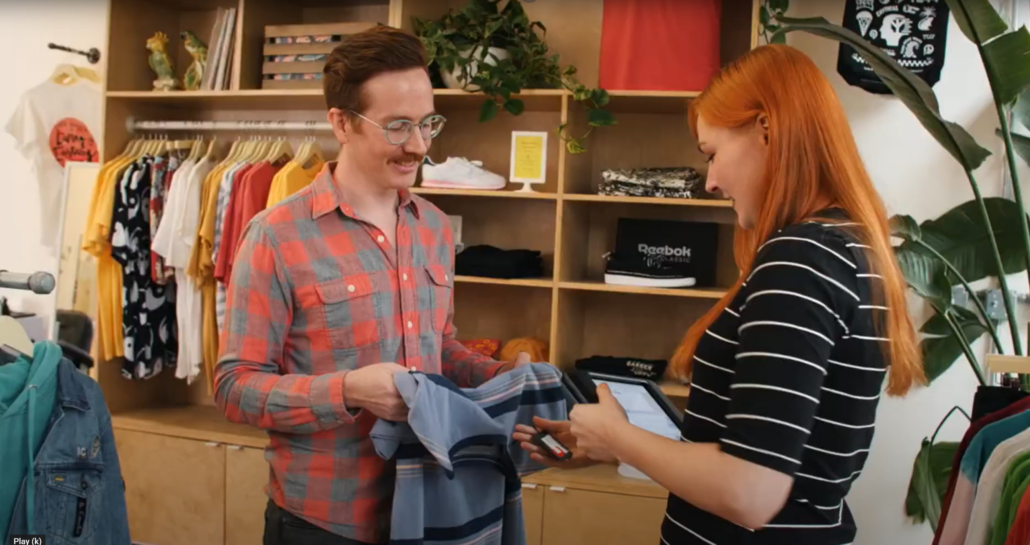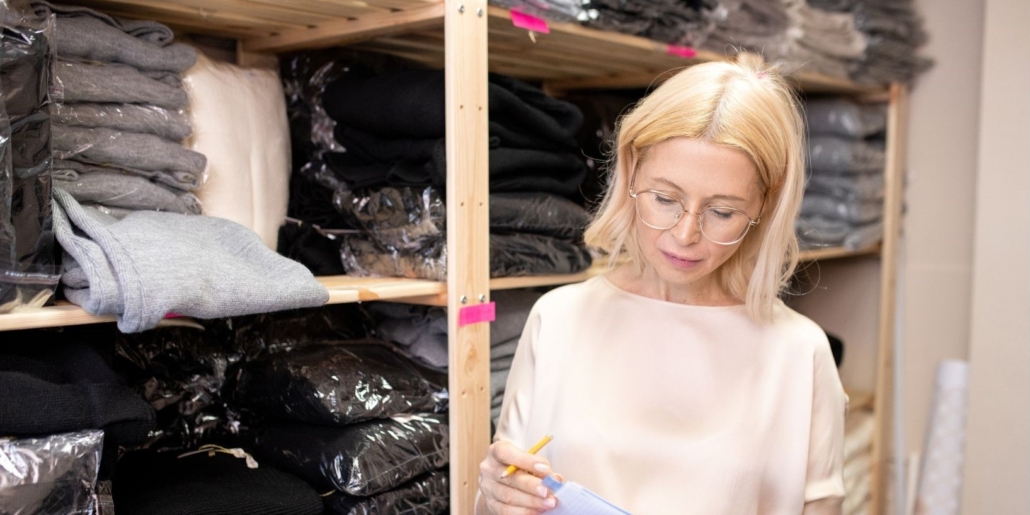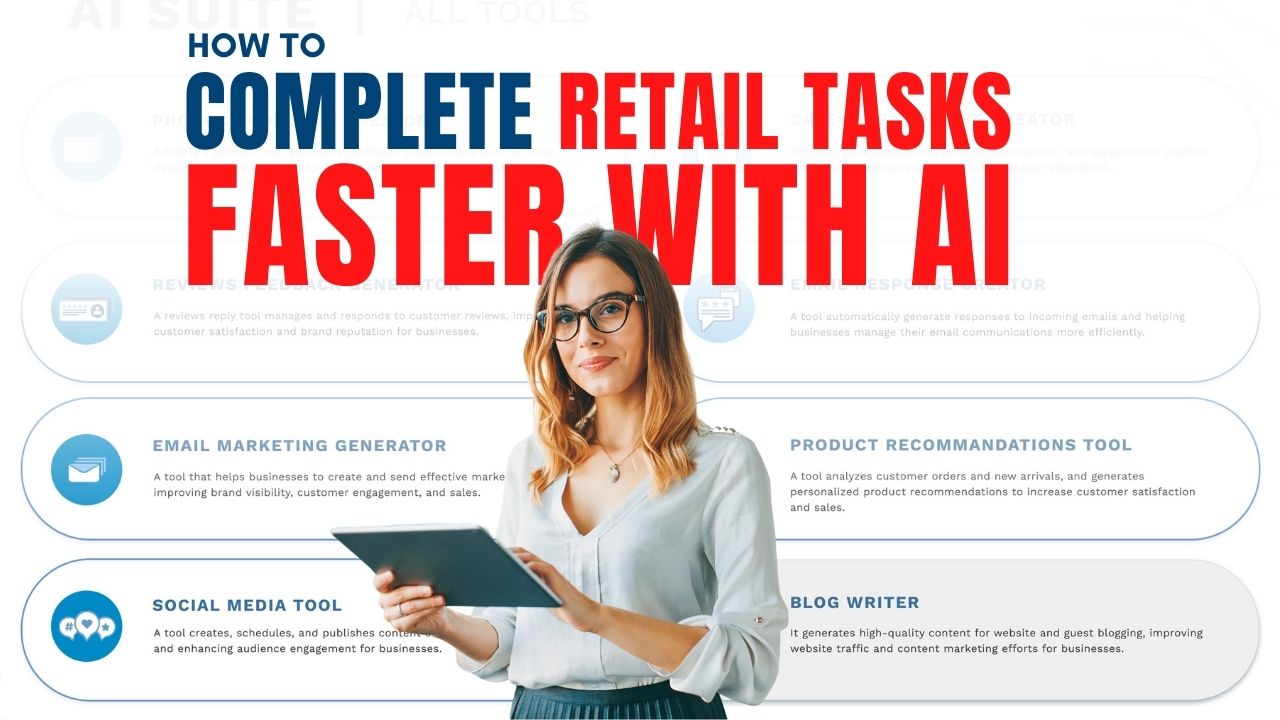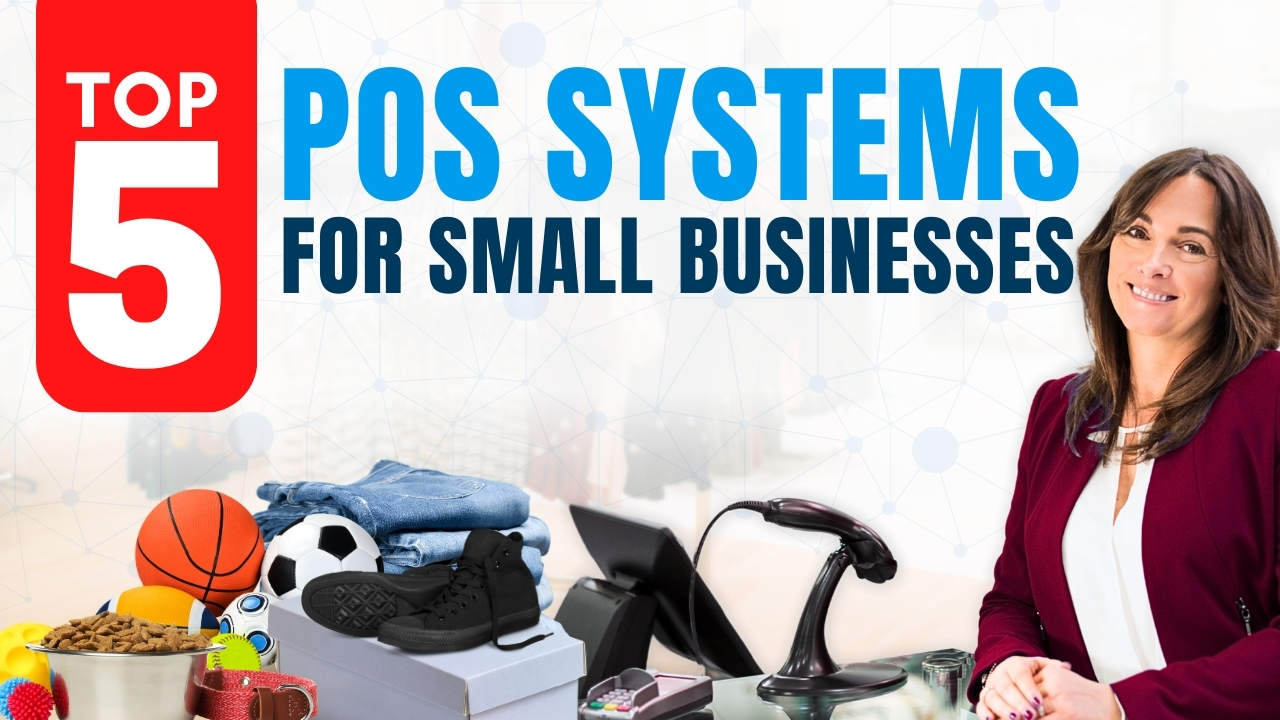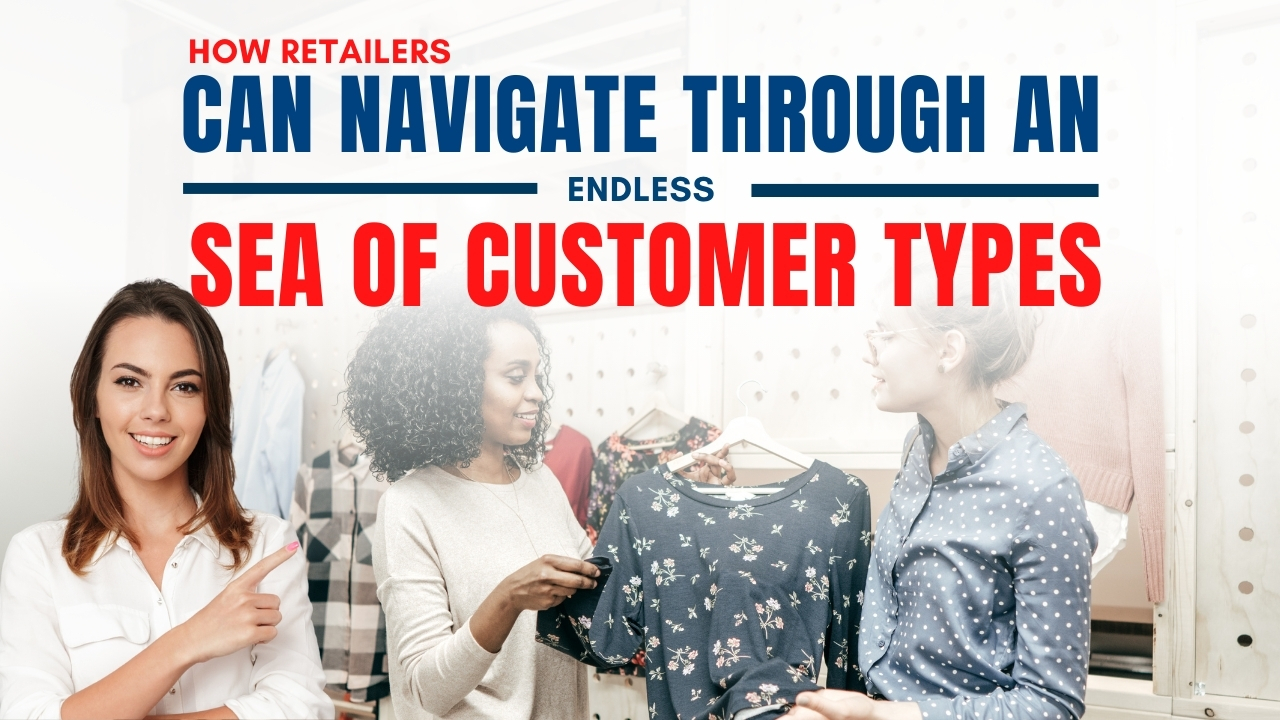Blog
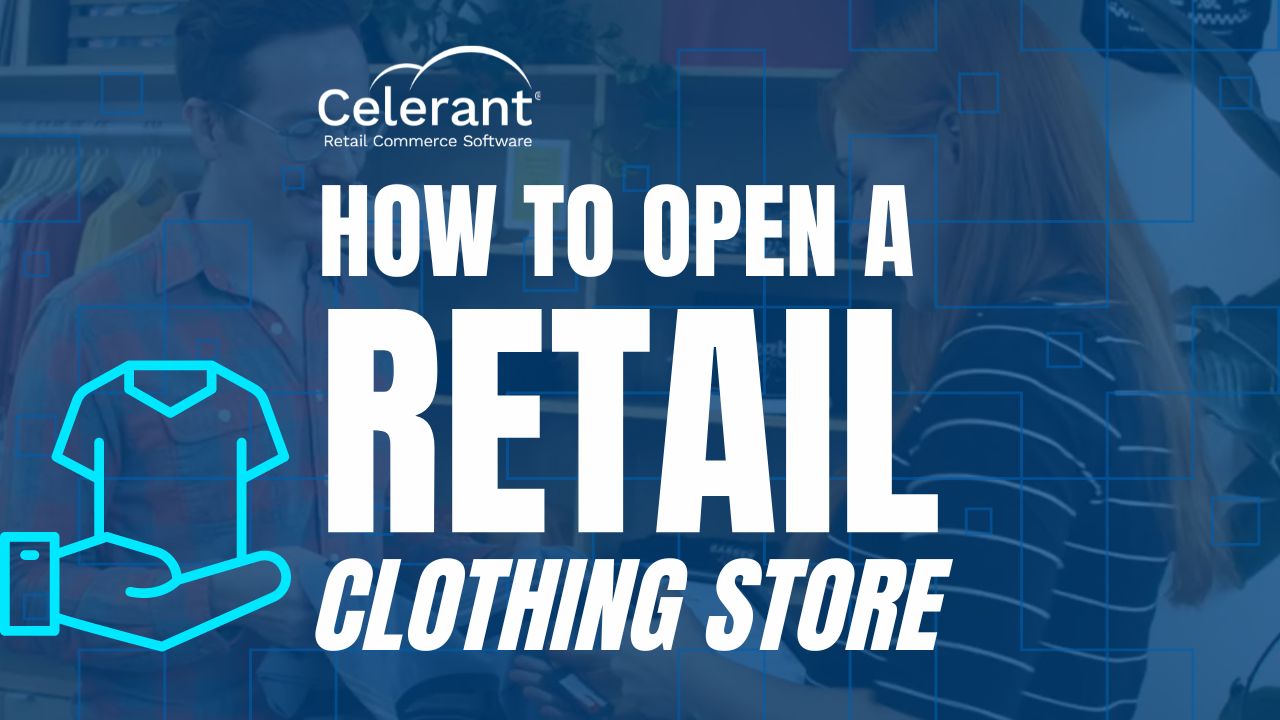
A comprehensive guide to start your own retail clothing store and add a touch of business brilliance into every fabric of your entrepreneurial journey.
Are you ready for a fashion-filled adventure? Imagine yourself surrounded by racks of stylish clothing, helping customers find their perfect outfit, and witnessing the joy on their faces as they strut out of your store with confidence. Opening a retail clothing store is all about pursuing your passion for fashion and building a vibrant, successful business.
In this exciting guide, we will unleash your inner fashion entrepreneur and equip you with the knowledge and strategies to turn your clothing store dreams into a reality. We will take you on a step-by-step journey, from envisioning your unique brand to creating unforgettable shopping experiences.
But first things first, let’s talk about a crucial aspect that can shape your success: developing a comprehensive tech strategy. In today’s digital age, embracing the right technology can streamline operations, enhance customer experiences, and keep you ahead in a competitive market. We’ll explore how to embrace a technology-forward mindset and harness cutting-edge tools to elevate your retail prowess.
Step One: Research and Planning
Market Research
Before you jump headfirst into the world of retail clothing, it’s crucial to conduct thorough market research. This invaluable step will help you understand the dynamic landscape of the fashion industry and make better decisions that resonate with your target audience.
Begin by identifying your ideal customers and dive deep into their preferences, desires, and shopping habits. Are they trend-conscious individuals seeking the latest styles, or do they prefer timeless classics? Understanding their unique tastes will allow you to curate a collection that captivates their fashion senses.
You also need to take the time to do a thorough analysis of your competitors. What are they doing well, and where are the gaps in the market that you can fill? Discovering your unique selling proposition—the secret sauce that sets you apart—is essential. It could be your commitment to sustainable fashion, exceptional customer service, or a carefully curated niche. Unleash your creativity and uncover that special something that will make your clothing store shine amidst the sea of options.
Business Plan
Think of your business plan as the guiding blueprint for your retail clothing store. A well-structured plan acts as a roadmap, ensuring you navigate the exciting yet challenging terrain of entrepreneurship with clarity and purpose. So, you would want to make sure that your business plans include an attention-grabbing executive summary that captures the essence of your vision and brand. Then, delve into the nitty-gritty details of your market analysis, demonstrating your understanding of industry trends, customer needs, and potential growth opportunities.
Oh and don’t forget to conduct a comprehensive competitive analysis that reveals your strengths and identifies areas for market improvement. Showcasing your marketing strategy—how you plan to reach and engage your target audience—is equally crucial. Will you utilize social media, influencer partnerships, or community events? Share your well-crafted plans to captivate the hearts and wardrobes of your future customers.
Moreover, financial projections—the numbers game that can make or break your dreams. Part of your business plan should include realistic projections that consider your startup costs, operational expenses, and anticipated revenue. Whether you’re seeking funding or self-financing, a solid financial plan demonstrates your understanding of the financial aspects of running a clothing store.
As you craft your business plan, keep in mind the importance of integrating a technology strategy to streamline operations and drive success. Consider how you’ll manage inventory efficiently, handle point of sale (POS) transactions, and whether you’ll initially offer online sales or plan to add them later.
Aligning your tech approach with your overall business strategy ensures a seamless and enhanced customer experience from the very beginning.
Step Two: Location and Store Setup
Choosing the Right Location
When it comes to opening a retail clothing store, remember the golden rule: “Location, location, location!” The right location can make all the difference in attracting your target customers and driving foot traffic. Consider factors such as the surrounding demographics, footfall, traffic and proximity to your target market. Are you targeting a trendy urban crowd or a suburban community? Understanding your customer base will help you identify the ideal location that aligns with their preferences and lifestyle.
Keep a keen eye on the competition as well. Is there an area bustling with similar clothing stores, or can you find a niche spot with less direct competition? Analyze the market dynamics and strategically position your store to stand out from the crowd. It’s not just about being visible; it’s about being in the right place to capture the hearts and wallets of your potential customers.
Store Layout and Design
Once you’ve secured the perfect location, it’s time to create an inviting ambiance within your clothing store. The layout and design play a crucial role in creating an enjoyable and immersive shopping experience. Consider the flow of the store—how customers will navigate through the racks and displays. Optimize the space to allow for easy movement and clear sightlines to attract attention to key areas and products.
Visual merchandising is your secret weapon to entice customers and showcase your merchandise in its best light. Play with color schemes, lighting, and strategic placement to create a visually appealing and cohesive atmosphere. Let your creativity shine through as you curate stunning displays that evoke emotions and tell a story.
Once your customer makes their way to the cash counter, you want to make sure you have a robust checkout process. A smooth and efficient checkout experience is essential for customer satisfaction. You might want to give a serious thought to deploying a modern point of sale (POS) system that streamlines transactions and enhances the overall shopping journey. With newer, more compact hardware and mobile POS systems like Celerant’s Cumulus Retail™ and Stratus Enterprise™, you have the flexibility to meet customers anywhere in the store. Chose a tablet, hybrid POS station, as opposed to your traditional counter station, where you can easily detach the tablet to provide personalized service throughout the store. Gone are the days of clunky cash wraps with bulky peripherals—the future of checkout is sleek and customer-centric.
Speaking of customer satisfaction, offering consumers a myriad of financing options can be a game-changer. Select a POS system that supports “Buy Now, Pay Later” programs in-store. Display signs throughout your store that promote these financing options, enticing customers to make larger purchases without the immediate financial burden. By incorporating these signs strategically, right from the entrance to the browsing areas, you can capture customers’ attention while they’re actively shopping, increasing the likelihood of driving sales.
Step Three: Legal and Financial Considerations
Business Structure and Licenses
When starting a clothing store, it’s essential to consider the legal aspects of your business. Choosing the right business structure sets the foundation for how your company operates and impacts your liability and taxation. Common options include sole proprietorship, partnership, limited liability company (LLC), and corporation. Each has its own advantages and disadvantages, so take the time to research and consult with a legal professional to determine the best fit for your specific needs.
Moreover, you’d also want to familiarize yourself with the licenses and permits required to operate a clothing store in your area. These may include a business license, sales tax permit, and possibly specialized permits for certain products or services. Compliance with legal requirements ensures a smooth and legitimate operation while avoiding any unnecessary penalties or legal complications that may arise in the future.
Funding Options
Funding your venture may require additional resources beyond your initial investment. Fortunately, there are various funding options available to aspiring entrepreneurs.
A detailed financial plan is crucial in securing funding. It showcases your understanding of the financial aspects of running a clothing store and provides confidence to potential investors or lenders. Outline your startup costs, operational expenses, and revenue projections. This plan serves as a roadmap for your financial success and helps you make informed decisions along the way.
When exploring funding options, consider the possibilities offered by POS and technology companies. Some providers offer financing options for their products, including hardware. This can alleviate the initial financial burden, allowing you to access the necessary technology and equipment without a large upfront cost. Additionally, many businesses now offer Software-as-a-Service (SaaS) models, providing you with a monthly lease-like payment structure for essential software and services, also lessoning your initial and upfront costs.
You can also explore the traditional funding routes as well, such as loans, grants, or crowdfunding platforms. Research local small business loans, seek out grants specific to the fashion industry, or tap into the power of crowdfunding to engage your community and potential customers in supporting your venture.
Remember, a solid financial foundation is vital for long-term success. Evaluate your options, crunch the numbers, and find the funding approach that best aligns with your goals and vision.
Step Four: Inventory and Supplies
Curating Inventory
When it comes to stocking your clothing store, curating the right inventory is key to attracting and satisfying your customers. While it may be tempting to offer a wide variety of options, remember that too much choice can be overwhelming. Instead, focus on selecting a well-curated collection that aligns with your target market’s preferences and reflects the latest trends.
Consider what your customers love – the specific styles, sizes, and price points that make their fashion-loving hearts skip a beat. Dive into market research, gather feedback from potential customers, and stay in the loop on industry trends to fuel your inventory selection.
And remember, quality is king! Choose suppliers and brands known for their top-notch craftsmanship and durability. Your customers deserve the best, and you would want them to keep coming back for more.
Now, here’s a pro tip that might ring a bell if you attended our Virtual Client Conference in 2021. Our keynote speaker, Paul Erikson, dropped some serious knowledge bombs that are bound to blow your mind. He spilled the beans on the secrets to post-pandemic success in the retail industry, sharing invaluable insights on curating inventory, creating a sense of scarcity, and igniting customer interest. If you want to dig deeper into Paul’s wisdom, and learn all the secrets to level up your inventory game we’ve got you covered with a saved video you can watch right here.
Finding reliable clothing suppliers and wholesalers is crucial to maintaining a consistent and high-quality inventory. Look for suppliers that offer the styles and products you want to stock, while also considering their pricing, minimum order quantities, and delivery times.
One helpful approach is to explore if your chosen POS provider can integrate with these suppliers. Integration can streamline your buying process by automating inventory management, order processing, and restocking. This ensures efficient operations and minimizes manual effort, allowing you to focus on growing your business and serving your customers. Certain point of sale (POS) systems make inventory management a breeze! They can import catalogs from your vendors, automate ordering based on your set inventory levels, and send orders electronically. No more hours wasted and all those headaches from doing everything so manually. Take the time to research retail systems and of course establish relationships with trusted suppliers who align with your store’s values and goals. Attend trade shows, reach out to industry contacts, and leverage online platforms to discover new suppliers and stay informed about the latest fashion trends.
Step Five: Marketing and Promotion
Branding and Online Presence
Building a strong brand identity and establishing a compelling online presence are crucial steps in attracting customers to your clothing store.
Your brand is more than just a logo- it is the personality and values that resonate with your target audience. So, you have got to focus on creating a brand that tells a story and connects with your customers on a more emotional level.
In today’s digital age, having an online presence is non-negotiable. Customers now are used to convenience and there is a myriad of ways they experience you and your brand, and a myriad of ways people can buy from you and your brand. Curbside-pickup, same-day delivery, and online ordering are just some of the ways customers experience your brand today.
But hold up! Simply having a website isn’t just enough. You have got to show up on various social media platforms too, even if you are not yet actively using them. Trust us, it’s worth it.
As the retail guru Bob Negen says, “In order to be a great omni experiential retailer you have to be incredibly strong. You can’t be a hobbyist; you can’t be the kind of person who opens their store and hope things work out. You have to become a retail pro. You have to understand how to lead and manage so that your team can give your customers an amazing experience.”
So, you have to be a really good merchant and do a good deal of marketing if you want to run a successful retail clothing store.
Being present across online channels helps you establish credibility and reach a wider audience. And guess what? We’ve got a special treat for you. Our very own Bob Negen, dropped some serious wisdom at the Virtual Client Conference 2021, revealing the secrets of the Omni-Experiential Future of Retail Marketing. You can catch him in action and gather more insights from his talk right here.
Advertising and Promotions
Effective marketing strategies play an essential role in promoting your clothing store and attracting customers. Explore various advertising channels and identify the ones that best align with your target market. Utilize social media advertising, influencer partnerships, content marketing, and search engine optimization (SEO) to increase your store’s visibility.
Your point of sale (POS) system should be capable of customer management, targeted promotions and loyalty programs. With the right POS, you can easily create discounts, special offers, and customer rewards to incentivize repeat visits and increase customer loyalty. It also enables you to collect email addresses and build your email marketing strategy for personalized and effective communication. Once you have collected enough of an email list of your customers, both in store and online, you can take this even further and start sending out personalized emails, based on triggers within your POS software. By sending the right message, to the right person, at the right time- you can increase the success of your email marketing by up to 6x!
Remember to stay creative and innovative with your marketing initiatives. Engage with your customers through captivating content, storytelling, and interactive experiences to create a strong emotional connection. Encourage your satisfied customers to share their positive experiences with their networks.
Step Six: Operations and Customer Experience
Staffing and Training
When it comes to running a successful clothing store, having the right staff is essential. Your employees are the face of your business and play a significant role in shaping the customer experience. Hire individuals who are passionate about fashion, knowledgeable about your products, and with some excellent communication skills.
Investing in proper training is the key to ensuring your staff delivers exceptional customer service. Teach them the importance of going above and beyond to meet customer needs and create memorable experiences.
Encourage a friendly and helpful attitude that sets your store apart from the impersonal experiences offered by big-box retailers and online giants like eBay and Amazon. The fact that your staff can simply open the door for your customers, say hello and thank you, remember their names- that in itself can become a huge differentiator from big box retailers.
Customer Service
Providing outstanding customer service should be a top priority for your clothing store. Make it a core value of your business and instill it in every interaction with customers. Train your staff to be attentive listeners, problem solvers, and product experts. Remind your team that your store’s biggest differentiator is the personalized service you can offer. Get to know your customers by name, greet them with a smile, and go extra mile to exceed their expectations. By providing a level of service that online retailers can’t match, you’ll create loyal customers who keep coming back.
Leverage all of the capabilities of your point of sale (POS) system to enhance the customer experience. For example, with Celerant’s POS, you can track customer preferences, purchase history and contact information, allowing you to provide personalized recommendations and offers. Use this data to tailor your interactions and make customers feel valued and appreciated with highly targeted and personalized marketing campaigns.
Remember, exceptional customer service is a powerful marketing tool. Satisfied customers are more likely to share their positive experiences with others, leading to increased brand reputation and word-of-mouth referrals.
Important Takeaways
By now you are hopefully equipped with new, valuable insights on how to open a successful retail clothing store. We covered a lot, so let’s do a quick recap of the key takeaways:
Starting a clothing store is an exciting journey filled with challenges and opportunities. The key is to stay adaptable, keep learning, and embrace the joy of bringing fashion and style to your customers’ lives.
